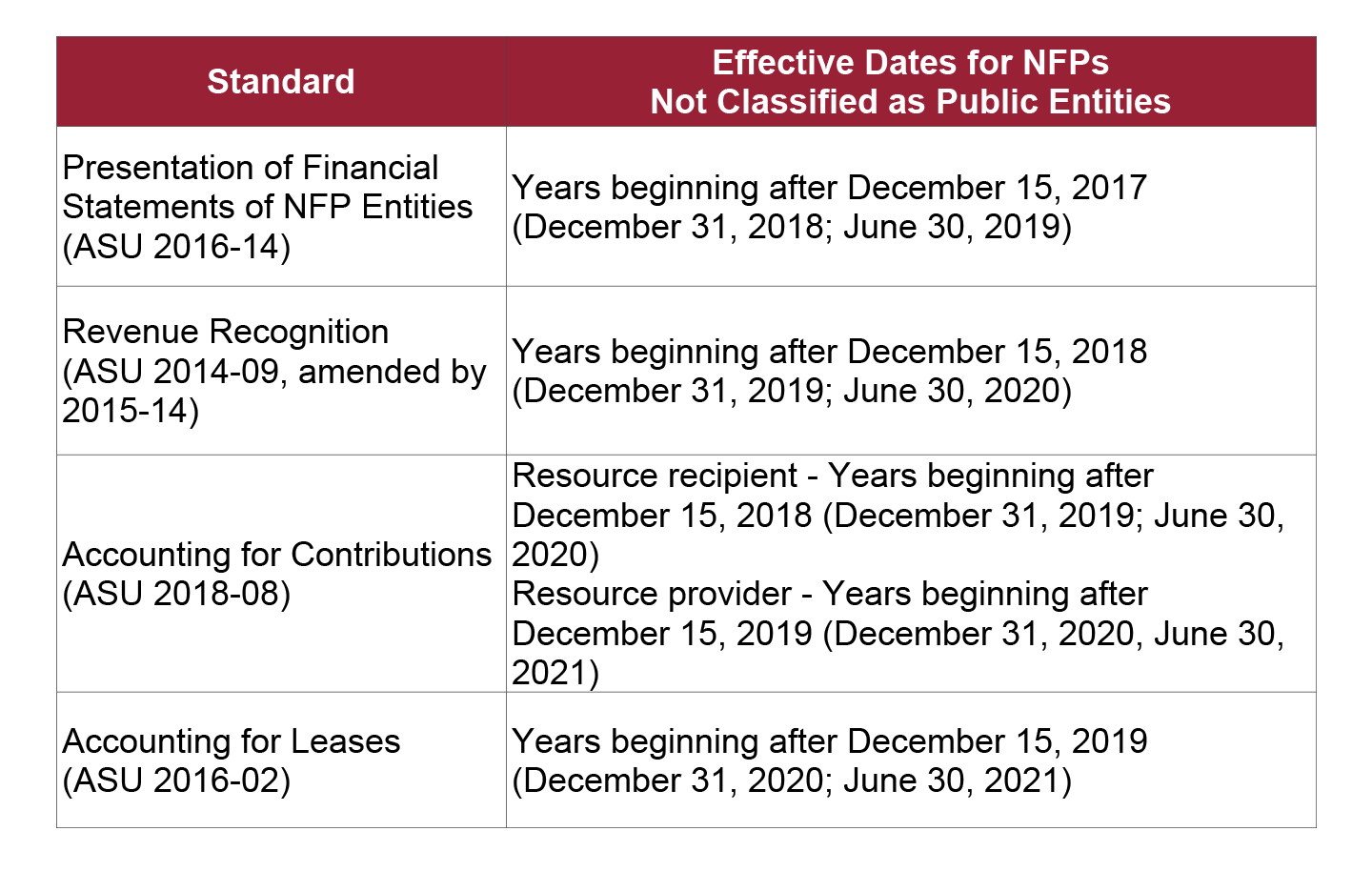Knowledge and Insights
Focusing on 4 New Nonprofit Accounting Standards Updates

Happy New Year! Saying this might make you think of Christmas in July but at Mercadien, July 1st starts our new fiscal year. Our tradition in the Nonprofit and Human Services Group is to attend the AICPA (American Institute of CPAs) Not-for-Profit (NFP) conference and gather all the information we can to update our staff and clients on trends in the sector. Kyle and Lovepreet attended the conference this year and brought back all kinds of great information about new financial accounting standards. While issues like cybersecurity, fundraising and enterprise risk management remain high on the concern list, gaining an understanding of the new standards was the chief focus this year.
In the next few years, nonprofits will be inundated with a series of new Accounting Standards Updates (ASU). There are quite a few standards that may impact your organization, however, Mercadien’s focus over the next year will be on the following four ASUs.

- Presentation of Financial Statements of NFPs Entities – In a nutshell, the disclosure and reporting standard is calling for NFP’s to enhance information reported for liquidity conditions, operating measures, and rights and restrictions (or the lack thereof) on funding and net assets. You will want to understand this standard and begin to think about what information you and your board will want to disclose in your financial statements once you adopt the standard.
- Revenue Recognition – This may be the most complicated of the standards on which we are focusing because it will require that you look at each revenue stream and evaluate it for proper recognition. Contributions are scoped out of this, however, the FASB issued a separate standard for contributions (see below). The core principle of the revenue recognition ASU is for organizations to recognize revenue to coincide with the transfer of goods and services using the five-step model.
- Accounting for Contributions – due to the inconsistency in recording contributions, this ASU clarifies how and when to recognize contribution revenue. The two issues covered in the ASU are, first, to determine who receives the benefits, which will determine whether a transaction is a contribution or an exchange transaction. Second is to determine when an organization is entitled to receive payments, which will determine whether there are conditions precluding revenue recognition.
- Finally, Lease Accounting is going to require that you record a new asset and liability on your books for leases that are longer than one year. This can impact bank debt covenants, grant reporting, and regulatory reporting.
For many NFPs, adoption of the above ASUs will be complex and require investment of time and money to ensure accurate implementation. We encourage organizations to start planning for these transitions now. Mercadien will roll out training and information guides to our clients to assist them with understanding and implementing the guidance. Look for notice of upcoming seminars.
If you have any questions or would like a consultation regarding any specific issues for your organization, please feel free to reach out to us: I’m at sritter@mercadien, Kyle’s at kneeld@mercadien.com and Lovepreet’s at lbuttar@mercadien.com.
